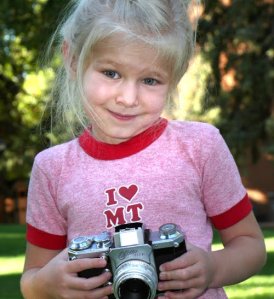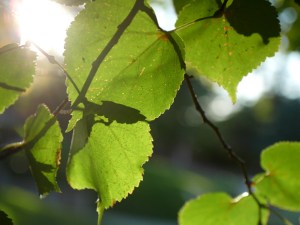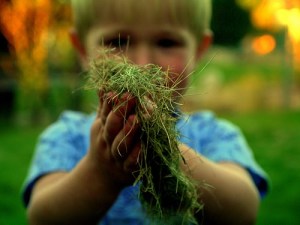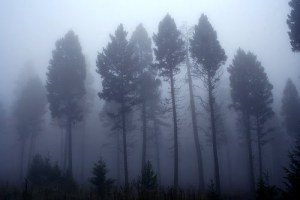What is Aperture.
What is Aperture.
This is me.
Brian Johnson is the owner of Missoula Photography School, Buffaloz Photography Training and Ayres Photography. He pretty much almost always has a camera on him. Actually, he usually has at least 4. He likes to teach and shoot and loves to learn. Yeah, even after 25 years of learning he is still trying to figure stuff out! Aren’t we all?
Buffaloz Photography Training. Free Online Photography Tips, Training And Tutorials.
PhotographyTraining: Understanding Depth of Field
When you start out in photography you usually just pick up a camera and start shooting. Then after a while you decide to learn more. You want to get better. One of the first things you need to understand is Depth of Field. It will really help improve your photography.
Basically, depth of field refers to the section of a photograph, from the nearest to the furthermost points from the camera, which appears to be in sharp focus.
Here are some examples of Depth of field.
 When I took this shot I was using an f/stop of f/16. The thing that controls your Depth of Field the most is Aperture. Aperture is the opening in your lens. Bigger apertures let more light into your camera and smaller Apertures let less light in. This Shot was taken with a small Aperture. A small aperture will give you more depth of field. When I shoot landscapes I will usually use a small aperture. That way I know that all of the shot will be in focus.
When I took this shot I was using an f/stop of f/16. The thing that controls your Depth of Field the most is Aperture. Aperture is the opening in your lens. Bigger apertures let more light into your camera and smaller Apertures let less light in. This Shot was taken with a small Aperture. A small aperture will give you more depth of field. When I shoot landscapes I will usually use a small aperture. That way I know that all of the shot will be in focus.
This is an example of Shallow depth of field. This was taken with a large Aperture. It was taken at F/1.4. You can see that a lot of the background and foreground are out of focus. When shooting portraits it is a good time to use a large aperture. That way your subject stands out from the background
When you learn the basic of photography and how to set your controls you will improve and photography will become much more enjoyable!
 Buffaloz Photography Training is owned by me, Brian Johnson. I do everything right now but soon Things will change!
Buffaloz Photography Training is owned by me, Brian Johnson. I do everything right now but soon Things will change!
Buffaloz Photography Training: Free Online Photography Tips, Training, and Tutorials!
Aperture, F/stop and Depth of Field Explained!
“Use a wider aperture,” or, “What f-stop are you using?” So, What is an f-stop? What is Aperture?
For those who want to learn more about topics like aperture, online universities have
photography courses.
Aperture is a term for a measurable expression of how much light is entering a camera lens. F/stop is a number assigned to a specific Aperture.
All cameras have a lens which light passes through to help record the image. However, to get a proper
exposure so you do not have underexposure or overexposure, light must come in through the lens in the
correct amount needed. The f-stop(aperture) on a camera helps control the exposure.
The “F” in f-stop stands for focal length. The focal length divided by the diameter of the pupil ,
or the amount of light entering the lens is how the f-stop is determined. The numbers f/2 or f/16 are
expressions of f-stops. The number denotes how wide the opening in the aperture is. The aperture
is an opening behind the camera lens. The aperture works like the pupil of the eye. It gets wider when
there is not a lot of light and smaller when there is more light. Test this out. Get a flashlight and go
to a mirror. First look into the mirror at the black part or pupil of your eye. Notice the size. Now turn
on the flashligtht and point it at your eye. While looking in the mirror you will notice that your pupil
gets smaller. This is exactly how an apeture works. The more light, the smaller the pupil of your eye, the
less light the wider the pupil of your eye. Now here is the weird part. When you apeture is open wider, the
f-stop will be a small number like f/5.6 or f/2(if you have a fast lens). If the apeture is smaller, you will
have a number like f/16 or f/22. The Aperture also controls the Depth of Field in your photo. To put it simply, Depth of field controls what is in focus in your photo. If you use a wide Aperture like F/1.4 you will have shallow Depth of field, or what is in focus will be shallow. Here is an example of what shallow Depth of field looks like.
If you use a small Aperture like f/22, you will have a photo where the depth of field is not so shallow. Below is an example.
There are other things that control depth of field like the length of your lens and the distance you are from your
subject but that is another lesson. Anyhow, You should get the general point of this lesson. If you have questions or need more help understanding, leave a comment below and I will do my best to answer it. Thanks! Hope you enjoyed this short lesson!!
Learn what controls Depth of Field!!
Learn about Depth of Field!!
A Background Can Make or Break a Photo!
Quick Tip
How many time have you taken what you thought would be a great picture and after you look at it you realize the photo’s background is too busy and lacks impact? I’ve done it.
Cameras have a tendency to flatten an image unlike the eye which can distinguish between the different elements in a photograph.
Pay attention to what is in the background. If you are shooting a portrait set your f-stop on f/8 or f/5.6. This way you will get an out of focus background and your eye will focus in the person instead of a busy background. Pay attentions to bright background also. Light backgrounds usually distract from the subject.
The background can ruin a photo or make a photo so always look at the background before and imagine how it will affect your photo.
The photos below will reinforce what is written in this post.
Thanks!
Great Depth of Field Video!
I found this video on depth of field and think it’s great. Since depth of field is very important I suggest everyone watch it. Thanks:)
I’m Freaked Out by my Camera! What is Aperture Priority?
Aperture priority, also known as Av or A on your camera, is a setting that most cameras have to allow you to choose a specific aperture while the camera selects a shutter speed to get the correct exposure. In manual mode you have to choose both aperture and shutter speed.
The main reason for using aperture-priority mode is so that you can control depth of field (I have a post on depth of field if you don’t know what it is. It is further down.). Aperture priority is useful in many situations. It is very handy in landscape photography when you want to have deep depth of field and everything in focus. Using f/22 is great for landscapes where you want everything in your picture in focus. In Av mode, all you have to do is set your aperture to f/22 and your camera will adjust to get the correct exposure. In low light situations you might need a tripod to steady your camera. Av is also every useful in portrait photography where most pro photographers shoot at f/8. f/8 is used by most pro portrait photographers because it allows you to have your subject in focus while throwing the background out of focus.
I use aperture priority almost every time I shoot. It is easier than shooting in manual mode and gives me more control than setting the camera on full automatic mode. I have used Av to shoot waterfalls, portraits, and landscapes. I think it is one of the best features on cameras when it comes to getting the correct exposure. If you are shooting on full auto mode, you really need to try it out. All of the photos in this post were taken with Av mode. If you have any questions, let me know and I will do my best to answer them, and please leave a comment letting me know what you think, Thanks, Brian:)
2nd Lesson on F-stops: Shallow Depth of Field.
A while ago I had a visitor who was wanting to know more about when to use f-stops. I covered what f-stop to use when taking a landscape(f/11-f/22). Now I am going to show you when you want to use a larger aperture. The photo below was taken using f/2.8. Some lenses will not have f/2.8. The might only go to f/4. If you have a camera that has f/4 as the largest aperture, substitute f/4 for f/2.8. Anyway this is my little boy holding grass (not the kind you smoke) ha ha ha. I used f/2.8 because I wanted to throw him out a focus and bring attention to the grass he was holding. So, when you want attention brought to a subject and you want shallow depth of field, use a large aperture like f/2.8 -f-5.6. The resulting style is sometimes referred to as Bokeh.
Just for some basic info, when shooting a portrait of a person, most pro photographers use f/8. Why you ask? Because f/8 gives enough depth of field to cover the head of a person and throw the background out of focus. Hope you liked this tutorial. If you have any questions let me know and I will do my best to answer them. Remember to bookmark this page so you can come back often. Thanks 🙂
Mystic Forest
I took this photo about 2 years ago. The fog was pretty thick and it was very pretty. It was taken in Montana, near Missoula. This is one of those shots where I happened to have my camera with me. I always carry my camera now because you never know if you will miss a good shot. Luckily for me, I had my camera on me that day.














Recent Comments